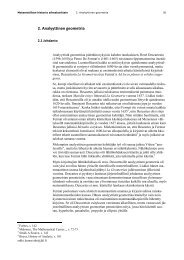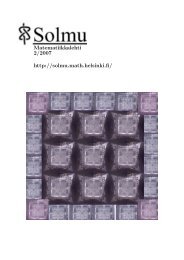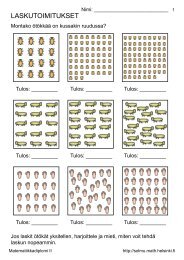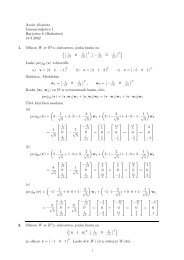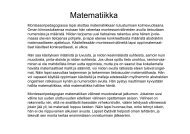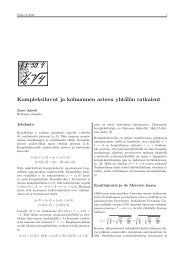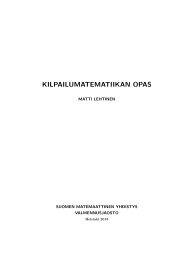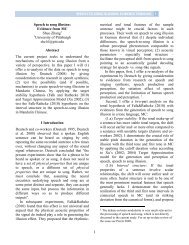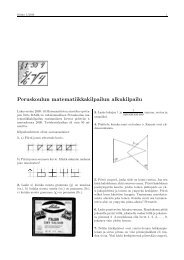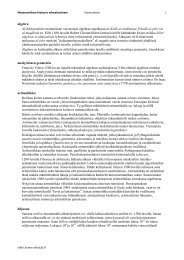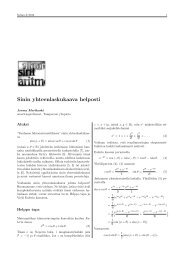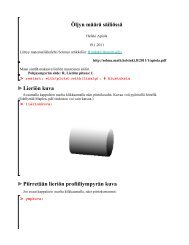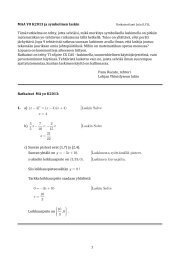Non-Newtonian turbulence: viscoelastic fluids and binary mixtures.
Non-Newtonian turbulence: viscoelastic fluids and binary mixtures.
Non-Newtonian turbulence: viscoelastic fluids and binary mixtures.
You also want an ePaper? Increase the reach of your titles
YUMPU automatically turns print PDFs into web optimized ePapers that Google loves.
24 1. <strong>Newtonian</strong> <strong>turbulence</strong><br />
all h <strong>and</strong> u0, weighted with their respective probabilities, [τη(h, u0)/τℓ0(u0)] [3−D(h)]<br />
(1−h)<br />
<strong>and</strong> p(u0). The latter, as before, is reasonably approximated by a gaussian of st<strong>and</strong>ard<br />
deviation σ2 u = 〈u20 〉. Integration over u0 gives<br />
p(a) ∼<br />
h∈I<br />
�<br />
h∈I<br />
�<br />
× exp<br />
dha [h−5+D(h)]/3 ν [7−2h−2D(h)]/3 ℓ D(h)+h−3<br />
0 σ −1<br />
u<br />
− a2(1+h)/3ν2(1−2h)/3ℓ2h 0<br />
2σ2 u<br />
�<br />
(1.70)<br />
From (1.70) the dependence of the acceleration moments on Rλ can be derived.<br />
For example, in the limit of large Rλ the second order moment is given by 〈a2 〉 ∼<br />
R χ<br />
λ , where χ = suph{2[D(h) −4h −1]/(1+h)}. The precise value of χ depends<br />
on the choice of D(h), but it is typically close to the K41 value χK41 = 1. In terms<br />
of the dimensionless acceleration ã = a/σa, (1.70) becomes<br />
�<br />
p(ã) ∼ dhã [h−5+D(h)]/3 R y(h)<br />
�<br />
λ exp − 1<br />
2 ã2(1+h)/3R z(h)<br />
�<br />
λ (1.71)<br />
where y(h) = χ[h−5+D(h)]/6+2[2D(h)+2h−7]/3 <strong>and</strong> z(h) = χ(1+h)/3+<br />
4(2h − 1)/3. Let us observe that the K41 prediction (1.67) can be recovered from<br />
(1.71) with h = 1/3, D(h) = 3 <strong>and</strong> χ K41 = 1. Comparison with data from high<br />
resolution DNS, as reported in [24], shows that the multifractal prediction (1.71)<br />
captures the shape of the acceleration pdf much better than its K41 counterpart<br />
(see fig. 1.6).<br />
Figure 1.6: Log-linear plot of the acceleration pdf. The crosses are DNS data, the<br />
solid line is the multifractal prediction, <strong>and</strong> the dashed line is the K41 prediction.<br />
The DNS statistics was calculated along the trajectories of 2 × 10 6 Lagrangian<br />
particles amounting to 1.06 × 10 10 events in total. Inset: ã 4 p(ã) for DNS data<br />
(crosses) <strong>and</strong> the multifractal prediction [24].<br />
24



